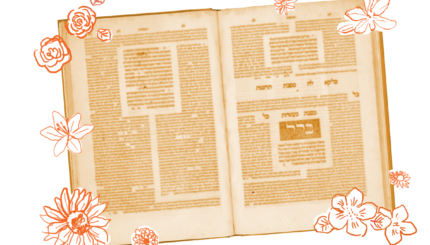Reprinted with permission from Jewish Ideas Daily.
In July 2010, several thousand people gathered in Jerusalem for the funeral of Rabbi Yehuda Amital, an extraordinarily complex figure whose journey took him from prewar Hungary, via the Holocaust and the 1948 War of Independence, to the elite of the rabbinic world, the heart of Israel’s military, the hilltops of Judea, and eventually the Israeli cabinet. Throughout, the yeshiva he founded and led, and the ideal of Torah study it embodied, were central to his life and teaching.
He was born in 1924 into a Hungarian-Jewish milieu where the ideological lines among contending factions, religious and otherwise, were less sharply drawn than in Russia and Poland. After losing his family in the Holocaust, which he spent in a labor camp, he made his way to Jerusalem, resuming his Talmud studies in one of the great traditional yeshivas where his evident learning made up for the “error” of his Zionism. Already in Hungary he had discovered and embraced the writings of Abraham Isaac Kook, whose themes—Jewish national and spiritual revival, universal ethics, the significance of the people and land of Israel—would, along with the Holocaust, set the terms for his evolving thought.

Courtesy of Yeshivat Har Etzion.
As a soldier in the War of Independence, Amital wrote the first programmatic article on the religious and moral meaning of being a religious fighter. In the 1950s, he helped create the institution of the hesder yeshiva, which combines religious study with military service. As the numbers of these yeshivas grew after the 1967 war, he would become a liaison between them and the military’s command echelons, with which he developed close ties. During this period he was also asked to head a new yeshiva being created in Gush Etzion, where a network of pre-state Jewish settlements had been destroyed in the 1948 war. The yeshiva became a flagship of the settlement movement as a whole, and his pioneering role there turned him into a public figure.
As the years passed, a combination of factors—his grief at the wartime deaths of his students, the uplift created by the 1977 visit of Anwar Sadat, his outrage at Israel’s 1982 invasion of Lebanon, a mounting sense of the ethical difficulty of continued occupation of the Palestinians—led Amital steadily to the Left. Still, he was careful to include the left-wing Peace Now with, on the Right, Gush Emunim and Ariel Sharon in the trio of “false messianisms” he denounced for offering simplistic answers to complex problems. In 1988, without a political ambition of his own, he would found a party, Meimad, that sought to introduce a moderate religious voice on public issues as well as in relations between religious and secular Israelis; in the rough-and-tumble of Israeli politics, it failed to win a single parliamentary seat.
Coming Back to Political Life
Abandoning political life, Amital was lured back after the Rabin assassination in 1995 when he was asked to join Shimon Peres’s government as a minister. This he did, hoping to ease, even a little, the terrible fissures then rocking Israeli society; when the short-lived government passed from the scene, he returned to his yeshiva.
Amital never ceased regarding the world of religious Zionism as the community to which he most closely belonged. The educational philosophy he developed over the decades cultivated traditional yeshiva scholarship while also placing a rare premium on independent thinking. In the hasidic and mystical side of his character he prefigured the neo-hasidic revival of recent years—of which, however, he was also a genuine critic. While encouraging his students to strive for authenticity in their religious lives, he urged them not to fetishize this at the expense of ethical values or of their identification with Jewry at large.
In his later years, the Holocaust came increasingly to preoccupy him. At times, it almost seemed as though the astounding Israeli story through which he had lived, and which he had done so much to shape, was slowly turning into mist, exposing in stark relief the horrors from which he had emerged and the terrible questions they left unanswered. Down to the end, in his last weeks, he spoke to his students of the need both to think for themselves and to cling with all their hearts to those on whom he bestowed the honorific, “simple Jews.”
Talmud
Pronounced: TALL-mud, Origin: Hebrew, the set of teachings and commentaries on the Torah that form the basis for Jewish law. Comprised of the Mishnah and the Gemara, it contains the opinions of thousands of rabbis from different periods in Jewish history.
Torah
Pronunced: TORE-uh, Origin: Hebrew, the Five Books of Moses.
Yehuda
Pronounced: yuh-HOO-dah or yuh-hoo-DAH (oo as in boot), Origin: Hebrew, Judah, one of Joseph’s brothers in the Torah.
yeshiva
Pronounced: yuh-SHEE-vuh or yeh-shee-VAH, Origin: Hebrew, a traditional religious school, where students mainly study Jewish texts.

